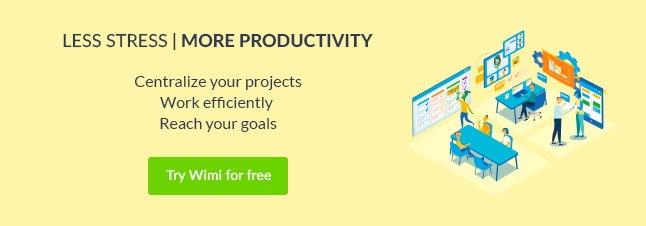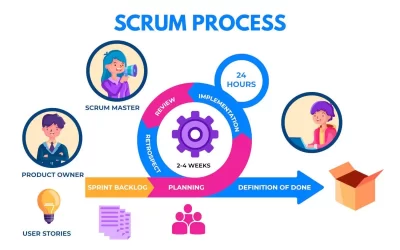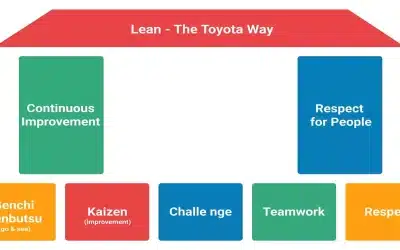Website creation, visual identity development, new advertising campaign launch, event organising or even public relations management – they are all projects that belong to creative agencies. Even though the principles of project management stay the same for all business sectors, this type of projects is not to be addressed in the same way that a house construction work or car production process.
Marketing and communications are completely abstract sectors for some clients. In order to cooperate efficiently and in the best conditions possible, you should explain to them operations of your creative agency as well as your way of managing projects.
Tips to better manage creative projects with your clients:
- Inform your clients about the creative process,
- Define the creative project from its very beginning,
- Prioritise communication,
- Set up the limits,
- Use adjusted tools.
Discover 5 tips to better manage creative projects with your clients!
1. Inform the client about the creative process
A creative agency does not operate in the same way like a production plant. Your clients should understand it so that they do not make your project fail by continuous rejections of your propositions, by having unrealistic expectations as well as by asking for too many modifications.
Take your time to explain to each and every new client your agency’s operating methods and the creative process as well as the time necessary to create each deliverable.
For instance, web site creation process is much more complex than many would think as, on top of the general structure, tables and pages, it is also necessary to create the SEO content, to assure a good level of conversations and create social media pages that will be associated with it.
By being transparent about your operation methods, you are setting up a base for a healthy relationship. The client understands how you work, they know the realistic timeframes necessary for a completion of a website, for example, and they largely appreciate the value of your work. It will equally help you justify your estimations when it comes to the budget and deadlines.
2. Define the creative project from the very beginning
In project management, no matter what the field of activity is, it is crucial to define the project before getting started. In communications and marketing sector, some clients do not really know what they want. They have nothing but a vague idea and the contours of their projects are not clearly defined. Such situation brings the risk of multiple problems arising:
- boundaries and objectives will continue to change according to the client’s wish and mood;
- the client is going to end up frustrated;
- the project is going to have a delay;
- you risk to lose money.
For a project to succeed, you and your client must have a clear and precise vision on it. Discuss it with your client, advise them and help them precisely define the contours of their project by determining the following:
- their objectives and expectations,
- limitations of the project,
- audience,
- graphics (logo, colours, font, etc.) and/or design,
- type of content (information on products/services, photos, texts and key words, etc.),
- budget and deadlines.
Before getting yourself involved in a creative project, you should have a clear understating of the client’s vision, know exactly what they want and what the final users will need out of it.
3. Prioritise communication
You can never repeat it enough: in project management, communication is a key element on the way to achieve the success.
First of all, communication with the client is vital for the entire duration of the project. Imagine client’s disappointment and frustration if, at the end of the project, the result does not come up to their requirements or if their needs have changed on the way. In such case, your work would have only been a waste of time and money, and your team would risk losing all their motivation.
So as to avoid this catastrophic scenario, the client should validate every step of the project in order to make sure that everything meets their expectations and addresses their needs.
What is more, communication between the team members is equally necessary. Sharing of information, new ideas, progress or difficulty of meetings- the co-workers should be able to easily exchange them any time so as to enhance collaboration, coordinate realisation of the project and assure its success.
4. Set up the limits
To perform well in the management of your creative projects, you should set the limits for both your clients and creative team.
As mentioned above, the project has to be clearly defined so as to avoid any excesses and additions of functionalities which can be both costly and incidental . Actively listen to client’s problems and offer them a solution adjusted to their needs and budget.
As follows, if the client wishes to implement modifications or add some functions, explain them that everything is possible but their requirements will have an impact on the budget and deadlines.
Another important point: you should lead the creativity of you team and set up the limits in order to avoid drifting away. A brainstorm may quickly lead into different directions. It is necessary then to impose a cadre and some constraints to creative spirits to help them be more productive.
Contradictory as it may seem, however, setting up the limits is a good way of developing creativity, problem solving capability and, above all, your team will explore all existing possibilities within the imposed limits.
5. Use adjusted tools.
The use of adjusted tools is one of the best ways to manage efficiently your creative projects with your clients. Project management software dedicated to creative agencies offers multiple functions that facilitate communication and collaboration with the client.
Centralisation and sharing of work documents, instant messenger, video calls, calendar, task management tool, progress tracking tool etc. – all these functions are necessary for good management of your projects and will help you lead them to success.
Now it’s your turn!










